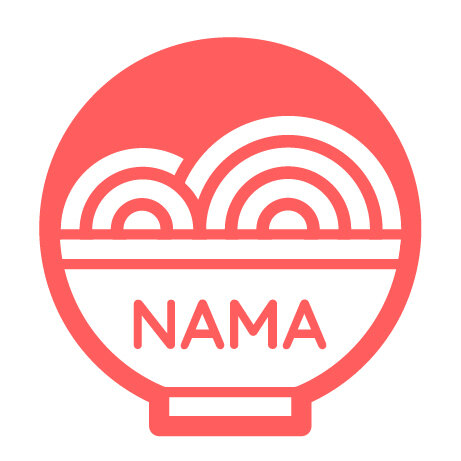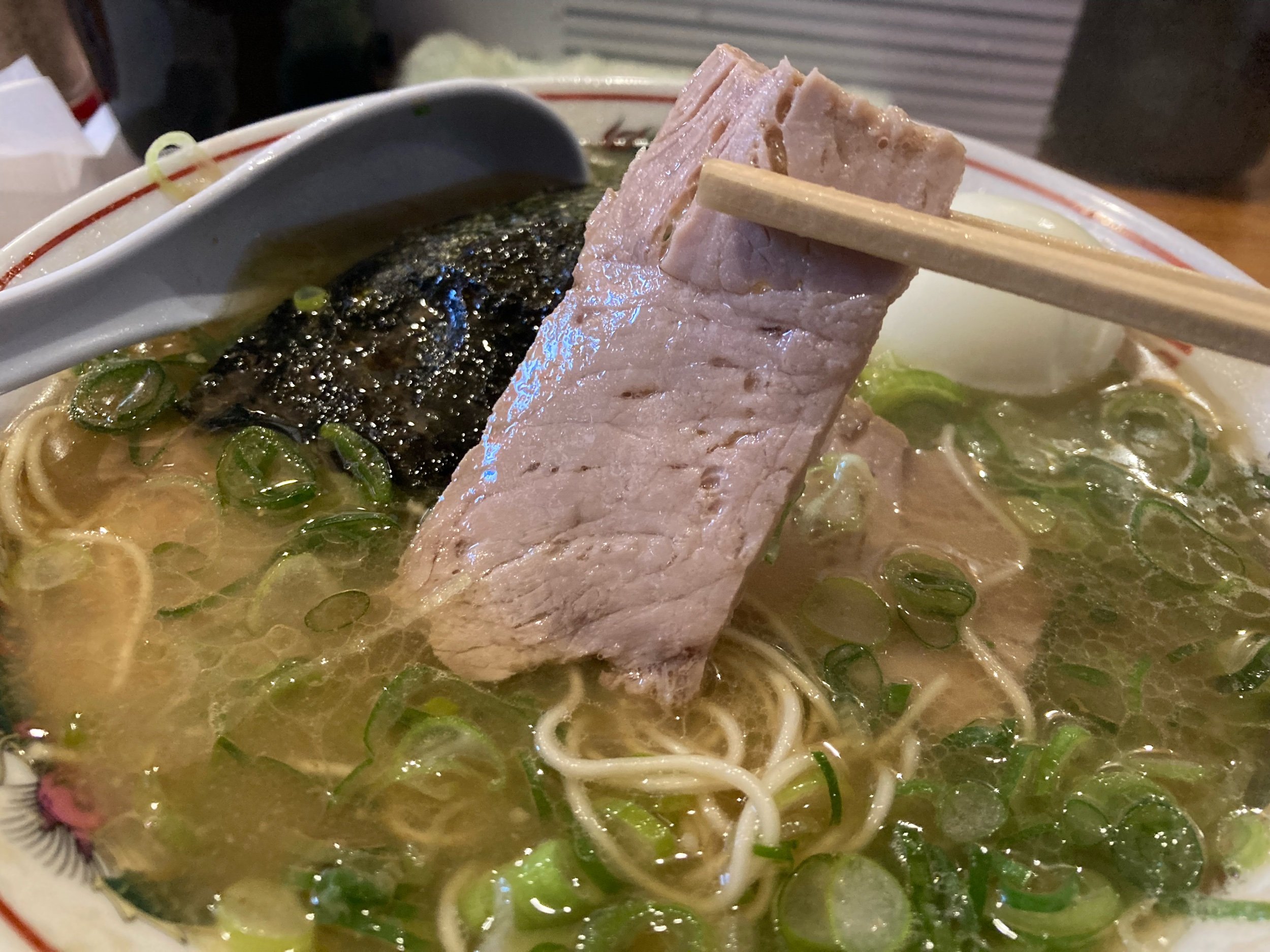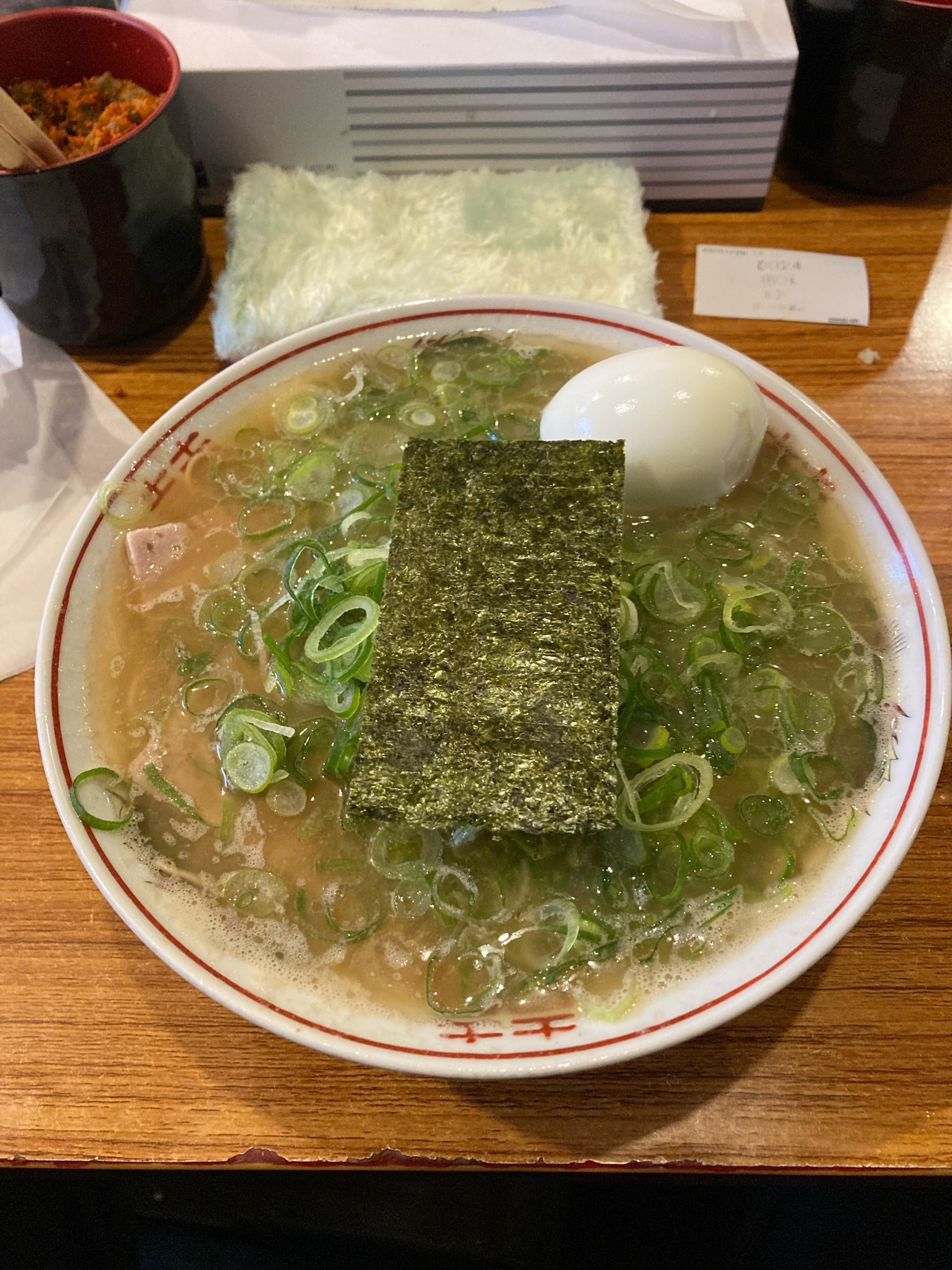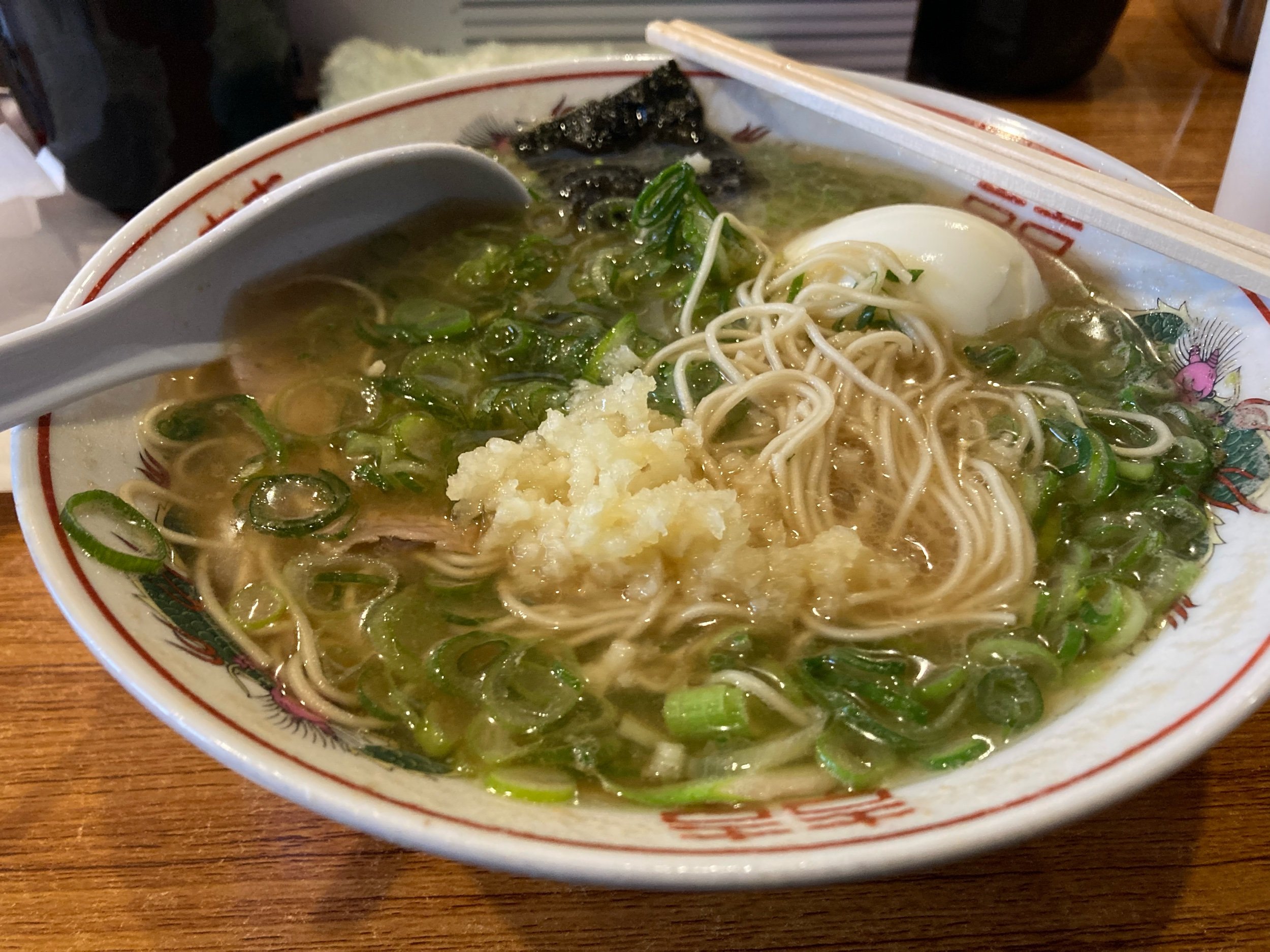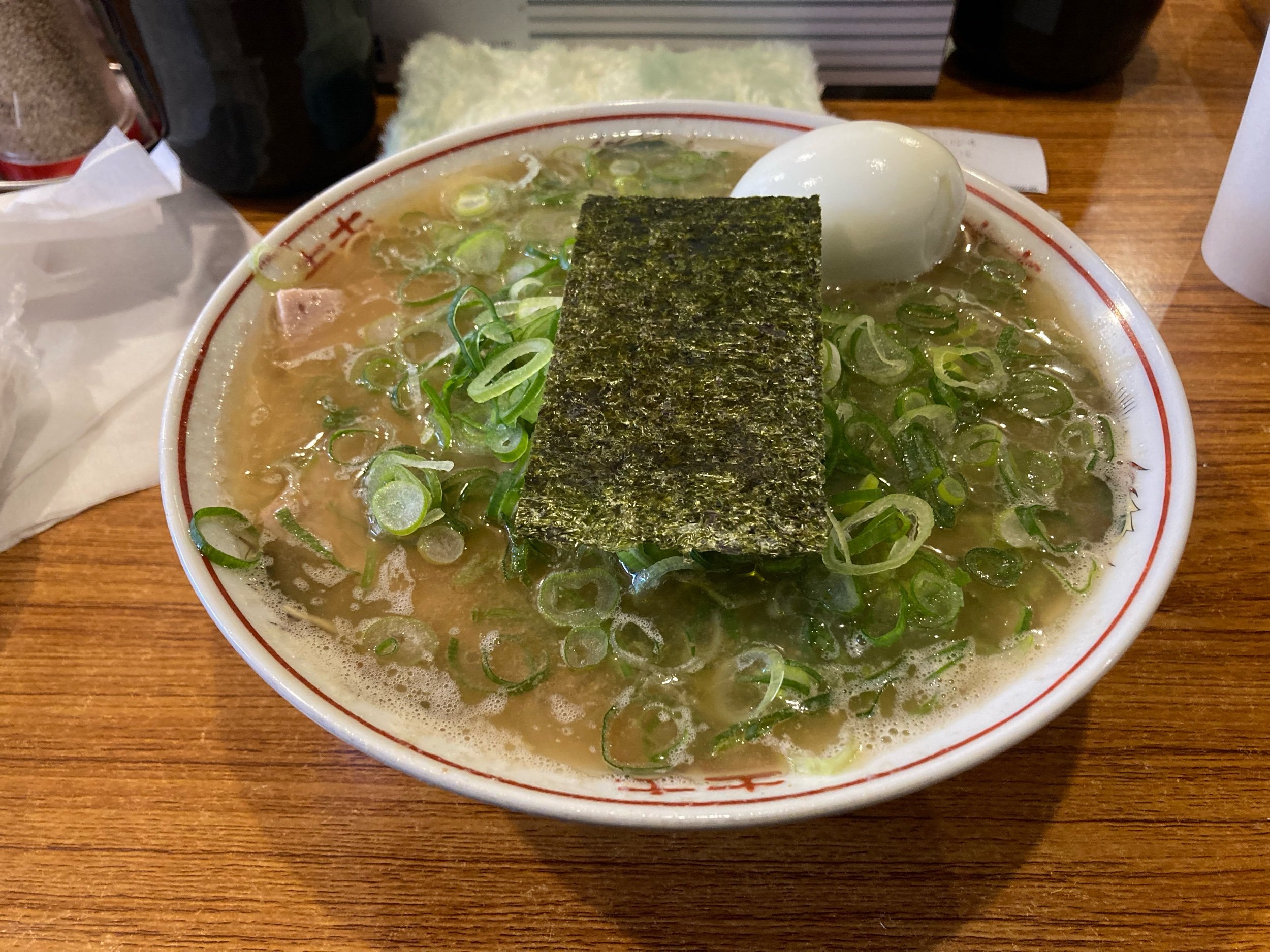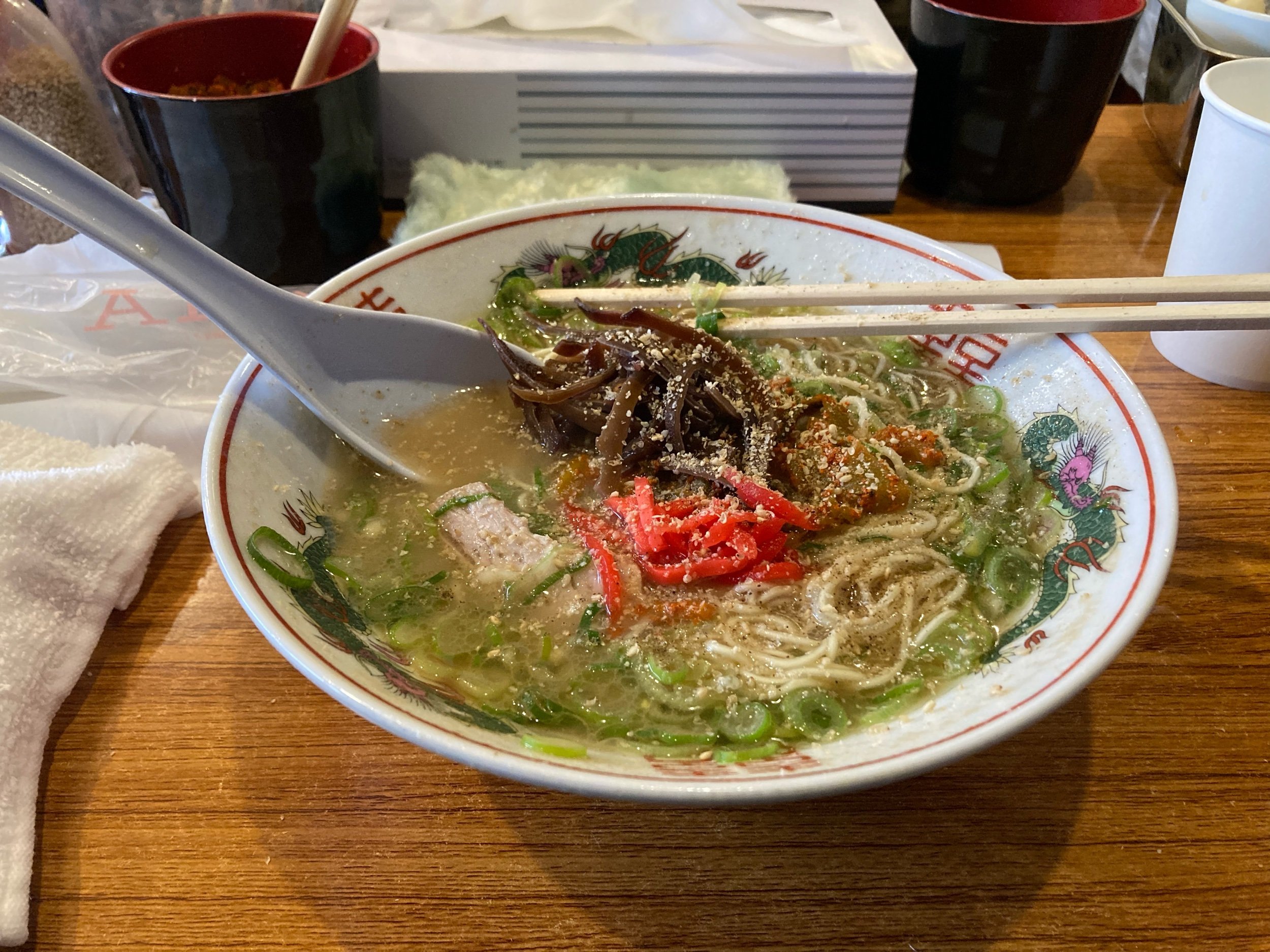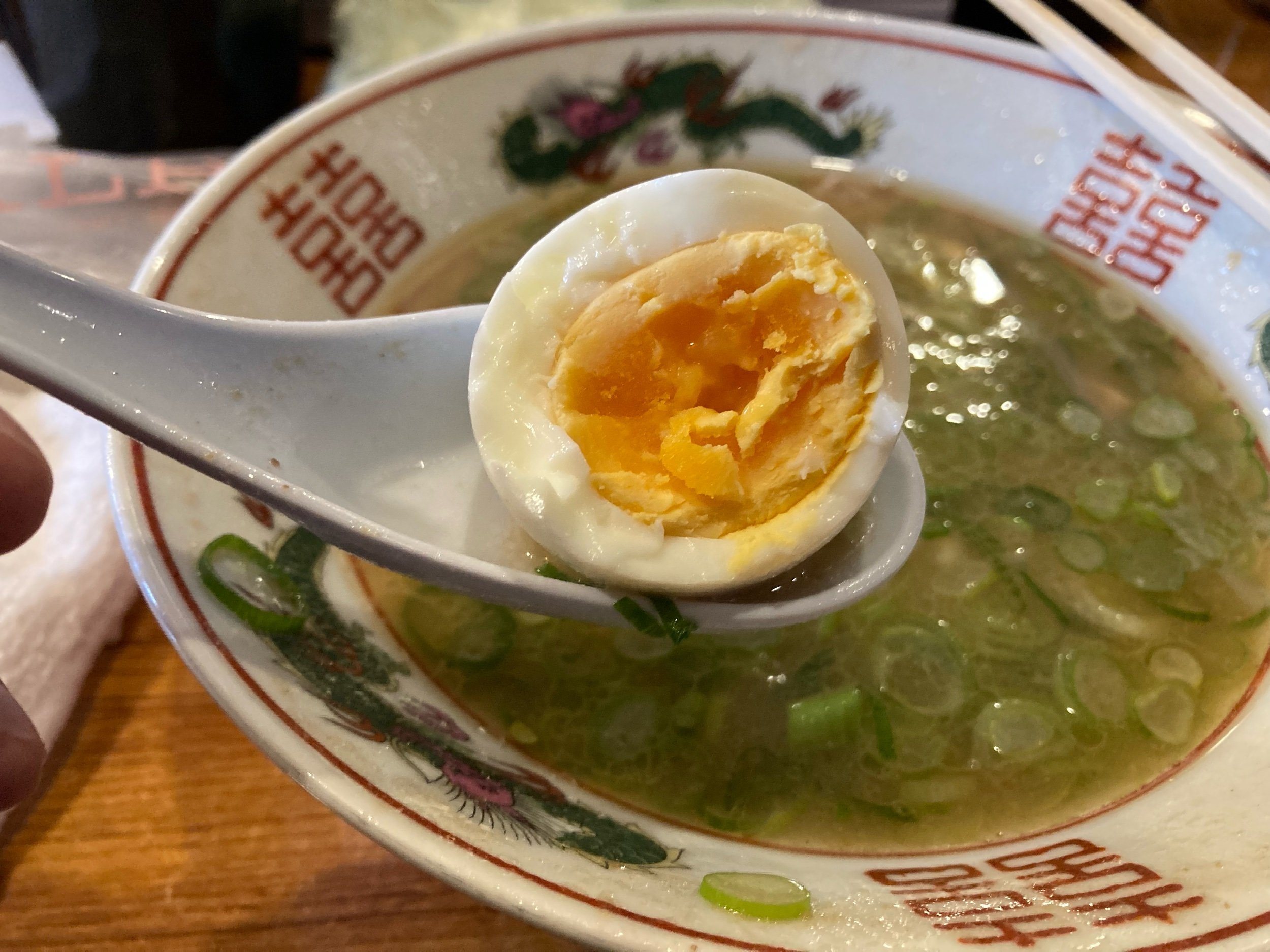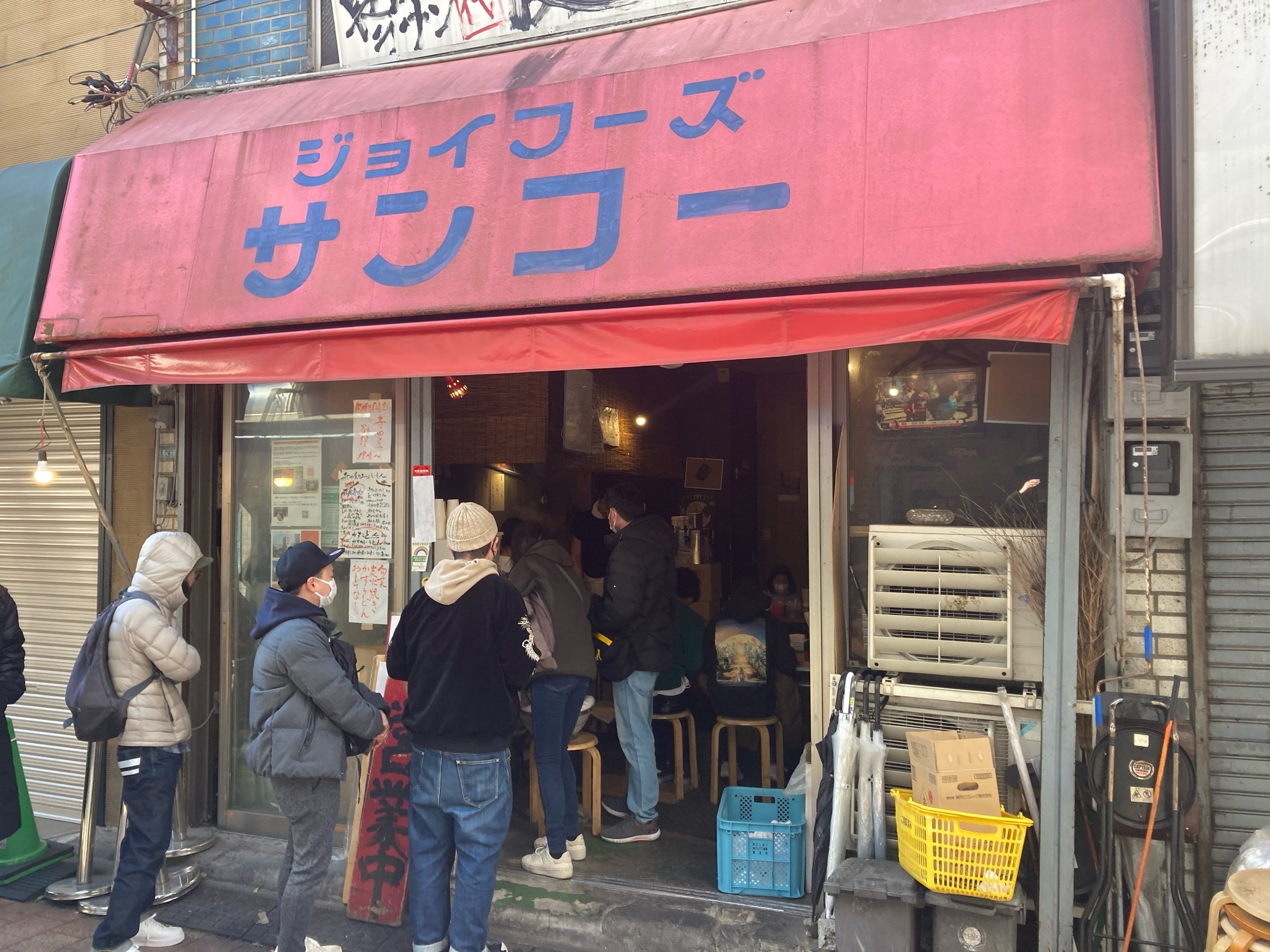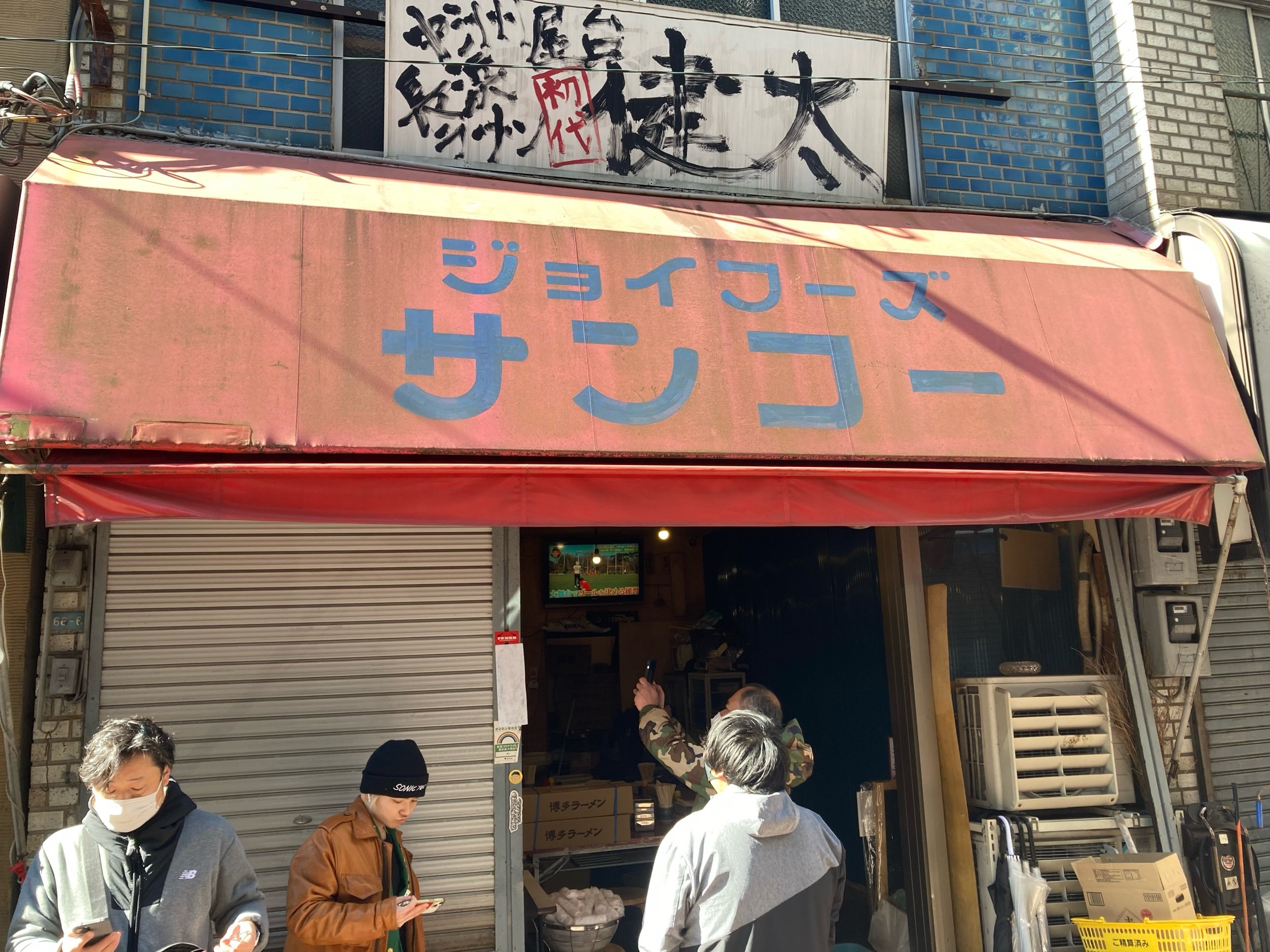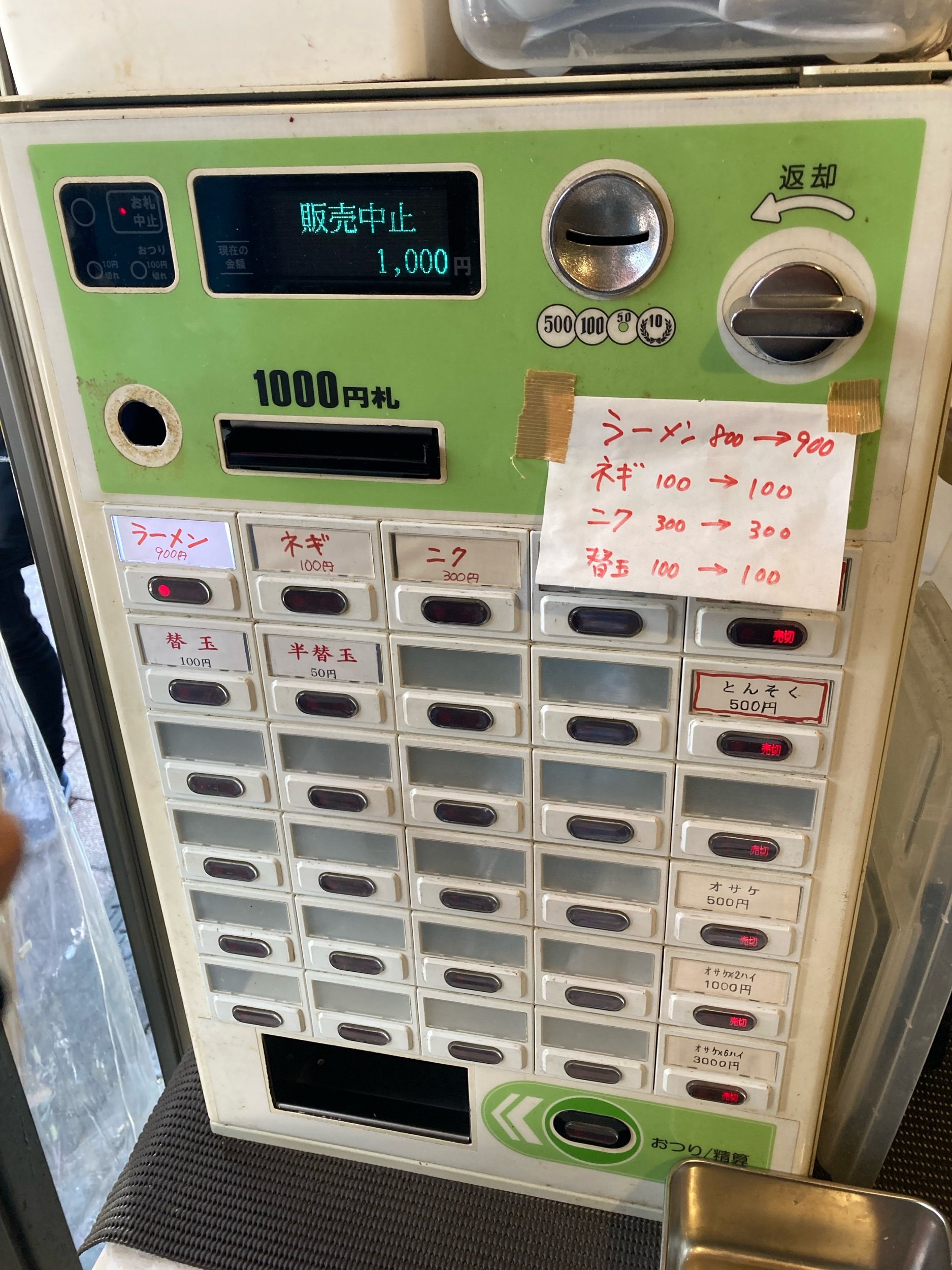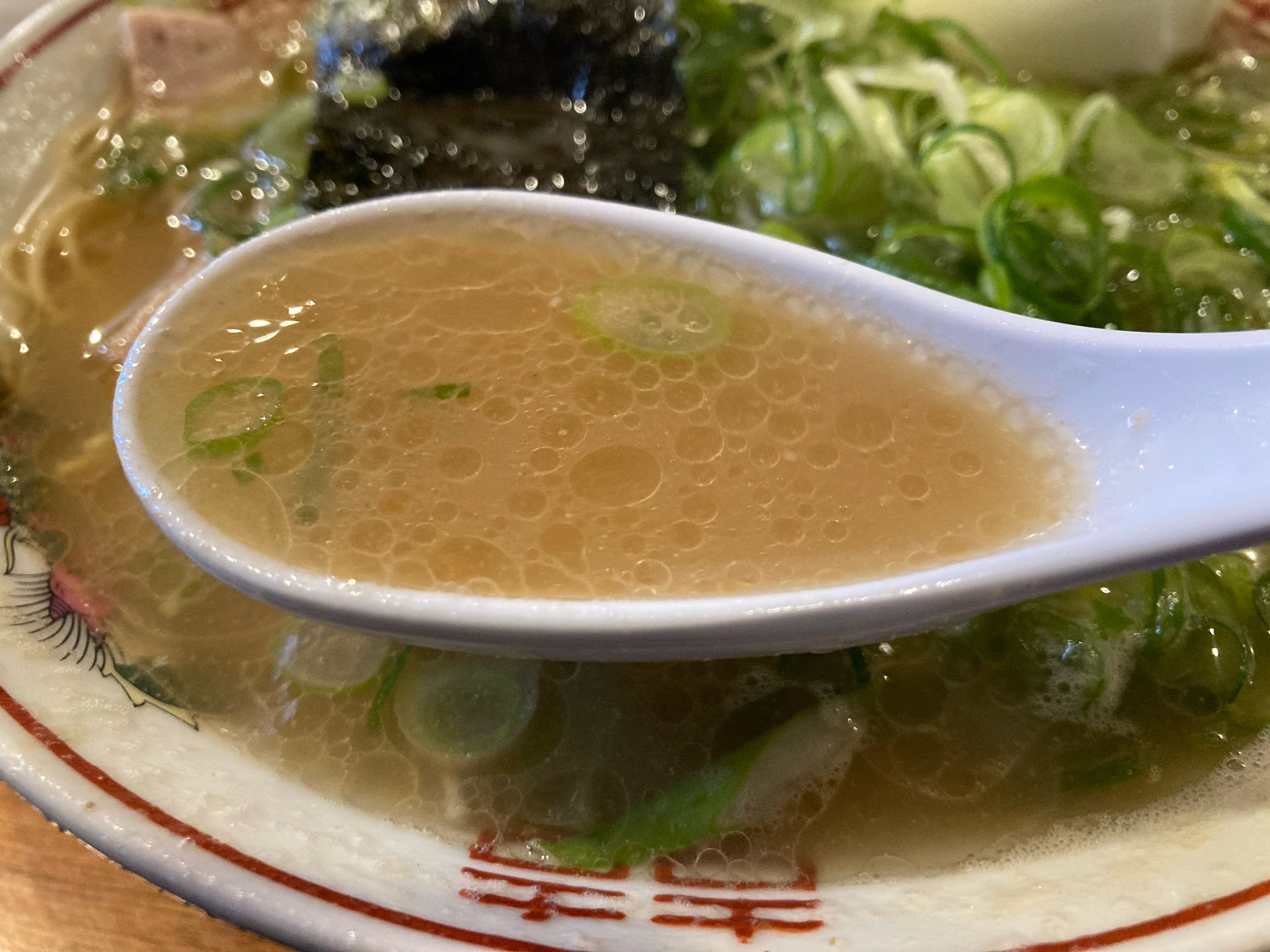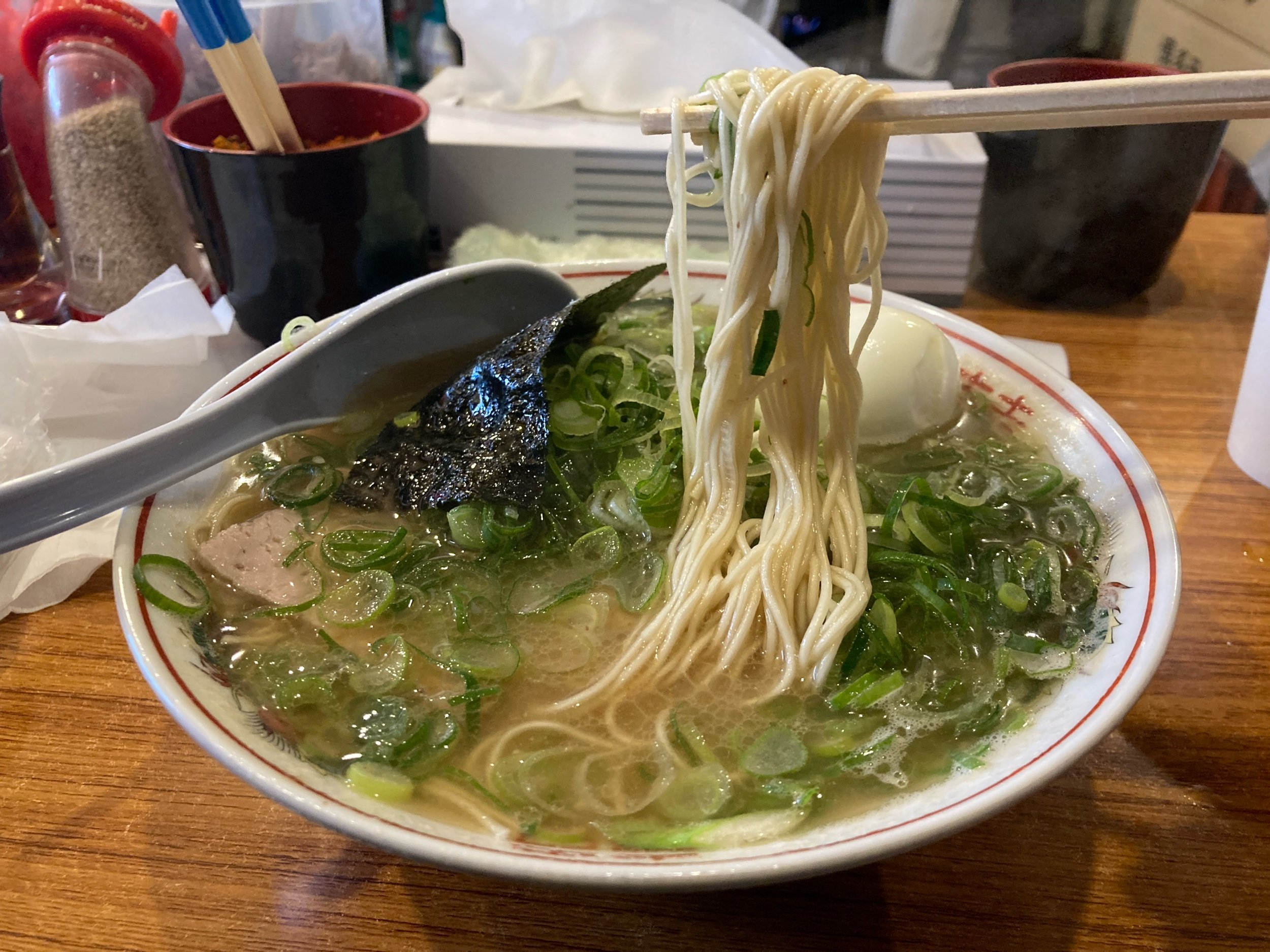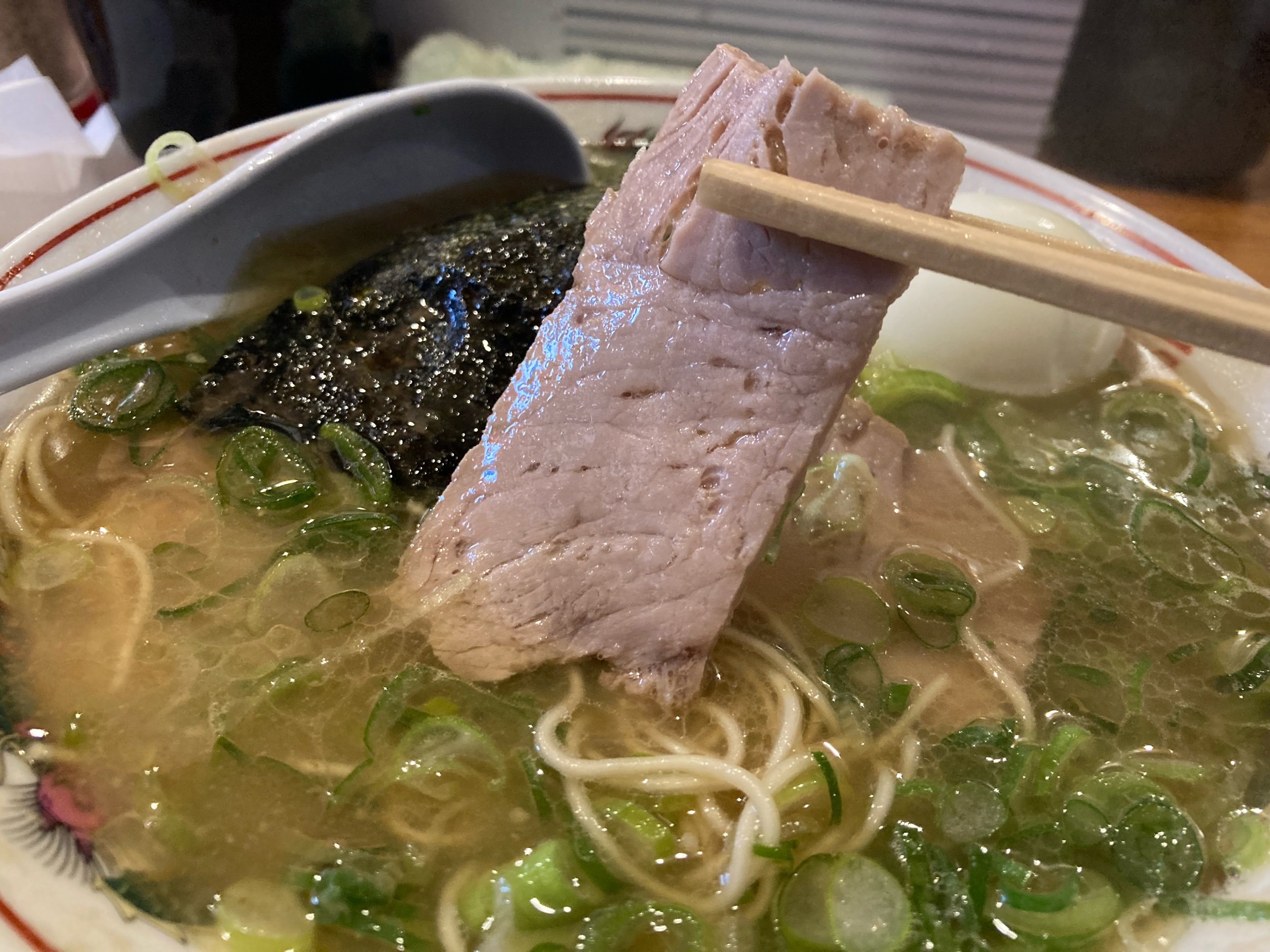Ramen Kenta / ラーメン健太 - Nakano
Nagahama tonkotsu ramen at Ramen Kenta in Koenji.
Ramen Kenya is a tonkotsu ramen shop just a few minutes of walking distance of Koenji station in Tokyo. You know you are at the right spot when you see the red awning with a long line of people to the side of it. The awning still says “Joyfoods Sunco” (ジョイフーズ サンコー), which the owner did not bother to update. The hastily added white board with 健太 over the awning is the only hint towards the great ramen being served here.
The front of Ramen Kenta right after opening the shop for lunch.
The inside of the shop has a strong yatai street food feel to it and could not be more simplistic. It reminded me more of a makeshift kitchen you expect to find in Southeast Asia, rather than in a ramen shop in Japan.
A look into Ramen Kenta. Very spartan interior, similar to an outdoor yatai food stall in Kyushu.
The ramen at Ramen Kenta are Nagahama style tonkotsu, a close relative of the famous Hakata style white tonkotsu ramen that rose to worldwide fame through Ippudo and Ichiran. Some say that Nagahama style tonkotsu was the original tonkotsu style in Fukuoka and that Hakata style developed out of it. They are very similar in many ways, but are different in some details. Some would argue, they are the same thing today and differences are rather imagined and made up.
Ramen vending machine at Ramen Kenta. As simple as it gets with very few choices to make.
The tonkotsu soup at Kenta is not on the extreme end in terms of creaminess, but it packs a lot of flavor, freshness, a bit of pork funk and some sweetness. All of that sets it apart from a lot of the mass produced tonkotsu ramen out there. It’s hard to describe how addicting the soup is from the first slurp. The umami immediately makes your tongue tingle from its intensity.
Fresh garlic is almost a must addition to this ramen bowl after a couple of slurps.
On the counter you will find fresh garlic and a garlic press, to add as much fresh garlic to your soup as you like. I recommend not overdoing it, I went with 2 cloves and found that to be perfect for me. However, make sure to give the soup and some noodles a slurp before you add the garlic, to experience some of the original flavor goodness.
Umami rich and creamy tonkotsu soup at Ramen Kenta.
The noodles are very typical low hydration fare which fit very well to the soup. Kaedama (extra noodle servings) are a must and can be bought directly at the machine. I went for one kaedama, but I have witnessed multiple people go for 2 or 3 kaedama.
Thin and slupry noodles, low hydration and very short boiling time.
On the topping side, there is only the choice of additional negi green onions and additional meat on the vending machine, which I both got. I think the negi are a great addition to this type of tonkotsu, as it cuts through the richness and adds a certainly needed zing. The chashu was super tender but lean pork, which worked extremely well with the already heavy soup.
Lean chashu at Ramen Kenta, fits really well to the rich and creamy tonkotsu ramen soup.
Ramen Kenta is definitely the right choice if you are craving a street food ramen experience in Tokyo, which is getting more and more difficult to find.
More information about Ramen Kenta:
I am talking about Ramen Kenta on episode 15 of the Ramen in Japan podcast
